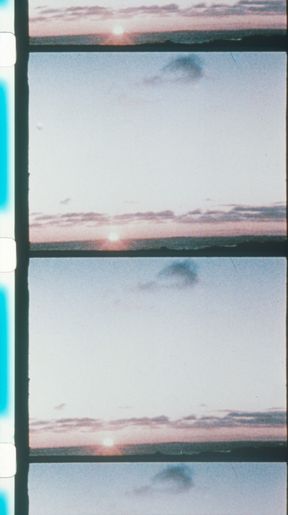Sunset to Sunrise

Dan Graham
Sunset to Sunrise, 1969
Film, 16mm, color, silent 4 min 20 sec (loop) Edition 1/10 + 2 A. P.
GF0003308.00.0-2002
Artwork text
The film is made by continuously moving a 16 mm movie camera from a position oriented toward the sun on the horizon line at the moment of sunset, and proceeding in a slow spiral with gradual upward inclination toward the top of the sky. This spiral successively maps the complete topological surface area of the sky. The next morning at sunrise from the same geographical site, beginning at the top, center of the sky, a reverse spiral downward in opposite right-to-left rotation is filmed, ending on the sun rising above the horizon. The sun’s light is simultaneously the point-source of illumination (defining) the surrounding 360 degree spatial-presence and for the mechanical appearance of the film (document). The spatial-presence illuminated is also the distance from the presence of the camera to the presence of the closest surface (placed in front of the camera’s lens—its frontal orientation at each moment) reflecting light back to the film in the camera. As the camera is hand-held it also reflects the filmmaker’s body axis of 360 degree movement relative to the surrounding 360 degree space it documents (which the camera’s image reflects). For the spectator viewing the film, the continuous movement in time, read kinesthetically, is correlated to the identity of the filmmaker. (Dan Graham)